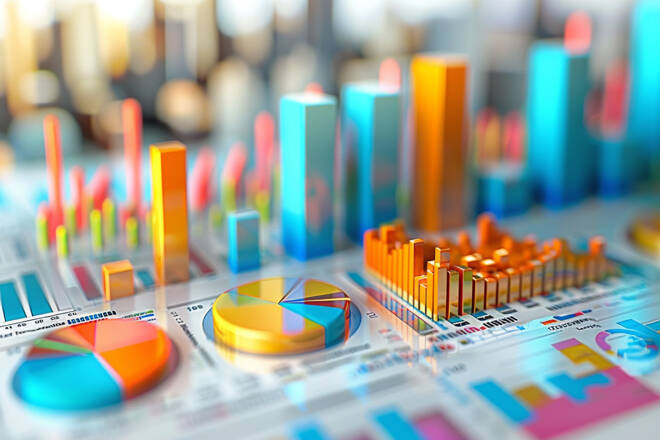Advertisement
Advertisement
US GDP Growth Starts 2024 Below Expectations
By:
Key Points:
- Q1 GDP growth at 1.6%, misses expected 2.4% mark.
- Increase in imports and government spending impact GDP.
- Inflation rises, personal saving rate drops in Q1.
Overview
U.S. economic growth started 2024 weaker than anticipated, as evidenced by the latest Gross Domestic Product (GDP) data released by the Commerce Department. The real GDP increased at an annualized pace of just 1.6% in the first quarter, falling short of the expected 2.4% increase projected by economists. This marks a significant slowdown from the 3.4% growth seen in the final quarter of 2023.
Economic Performance Details
The modest rise in GDP was primarily driven by increases in consumer spending, residential and nonresidential fixed investments, and state and local government spending. However, these gains were partially offset by declines in private inventory investments and a downturn in federal government spending. Notably, imports, which subtract from GDP calculations, saw an increase during the quarter.
Consumer and Government Spending Trends
Consumer spending showed a mixed picture, with a rise in services expenditure, particularly in healthcare and financial services, being partly offset by a decrease in goods spending, especially in motor vehicles and energy products. On the government side, while state and local government spending increased, primarily due to higher employee compensation, federal government expenditure experienced a downturn, contributing to the overall deceleration in GDP growth.
Investment and Trade Trends
Investments showed divergent trends, with residential fixed investment accelerating, highlighted by growth in brokers’ commissions and new single-family housing constructions. Conversely, nonresidential investment saw notable increases in intellectual property products. The increase in imports, covering both goods and services, further weighed on the GDP.
Inflation and Income Metrics
Inflation indicators accelerated, with the price index for gross domestic purchases rising to 3.1% from 1.9% in the previous quarter. Personal consumption expenditures increased significantly, reflecting heightened consumer prices. Additionally, personal income saw a considerable boost, leading to a rise in disposable income, although the personal saving rate dipped slightly from the previous quarter.
Market Forecast
Given the mixed economic indicators—slower GDP growth, mixed consumer spending, and rising inflation—market sentiment might lean cautious. Traders should prepare for potential volatility, with a short-term bearish outlook on the U.S. economy until further signs of stabilization or growth are evident. The forthcoming second GDP estimate, due in late May, will be crucial for confirming trends and adjusting forecasts accordingly.
About the Author
James Hyerczykauthor
James is a Florida-based technical analyst, market researcher, educator and trader with 35+ years of experience. He is an expert in the area of patterns, price and time analysis as it applies to futures, Forex, and stocks.
Did you find this article useful?
Latest news and analysis
Advertisement
